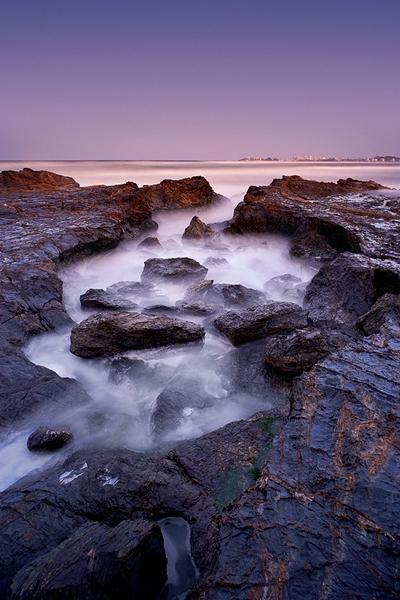Creating Misty Water in your Landscape Photos
Many people have asked me how to create the "misty water" sea effect as seen here....
This is really a quite simple effect to achieve and requires only one piece of specialised equipment... a tripod.
The technique is called "dragging the shutter"... that is, making the camera shoot a loooong exposure time on purpose.
The long exposure means that the ocean waves have time to move over the rocks and back out again. So during this time, the camera has seen both the white water on top, plus also the rocks underneath. The resulting image is then a combination of both and it looks like mist.
Why the tripod?
I am glad you asked.... naturally we need to hold the camera very still during the exposure, or else everything in the shot would be blurred.... we are happy to allow the waves to move as this is creating the effect we are after, but if the rocks also appeared to move then things wouldn't look so good.
But how do we make the camera take such a long exposure?
Firstly you need to drive the camera manually. Leaving your cam on full automagic may not always to do the trick, as it naturally wants to shoot the shortest possible exposure to avoid blur due to camera movement.
So get off full-auto and give either Manual (M - you set shutter speed and aperture and watch your light meter for correct exposure) or Shutter Speed Priority (Tv - you set the shutter speed - in this case long - and the camera sets the aperture that suits) a go.
In both of these cases there will be limitations on just how long a shutter speed you can make your camera do, as this will be governed not only by the characteristics of your camera, but also how much available light there is at your location.
So a shot like this is harder to do at midday, than it is to do just before sunrise or sunset. This does not mean that it can't be done at midday, but some extra equipment like Neutral Density Filters may be required.
So to make it easy on yourself, try and work in the low light morning and late afternoon periods, but PLEASE!! be mindful of your location, the sea and your own safety.
Before venturing out on any shoreline rocks, spend 5 minutes watching the sea from the safety of the beach. Waves arrive in sets and these can be minutes apart, so if you are not careful it is possible to venture out in the calm, only to be met by some nasty large waves with the power to wash you away.
Stay safe & happy shooting!
Russell
See more Landscape Photography Tips





Comments & Feedback